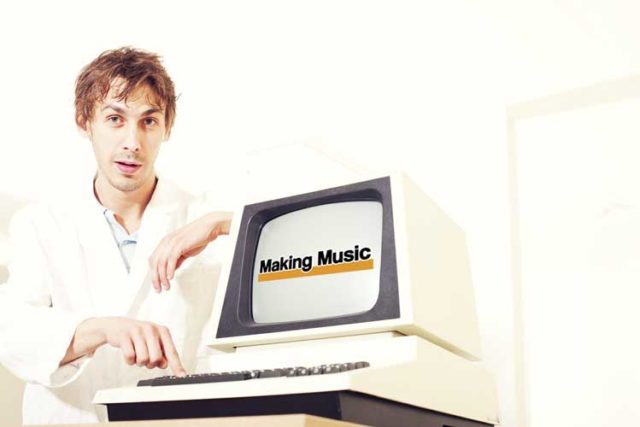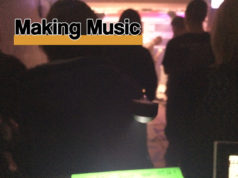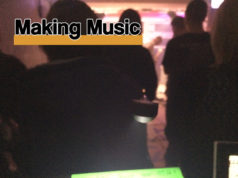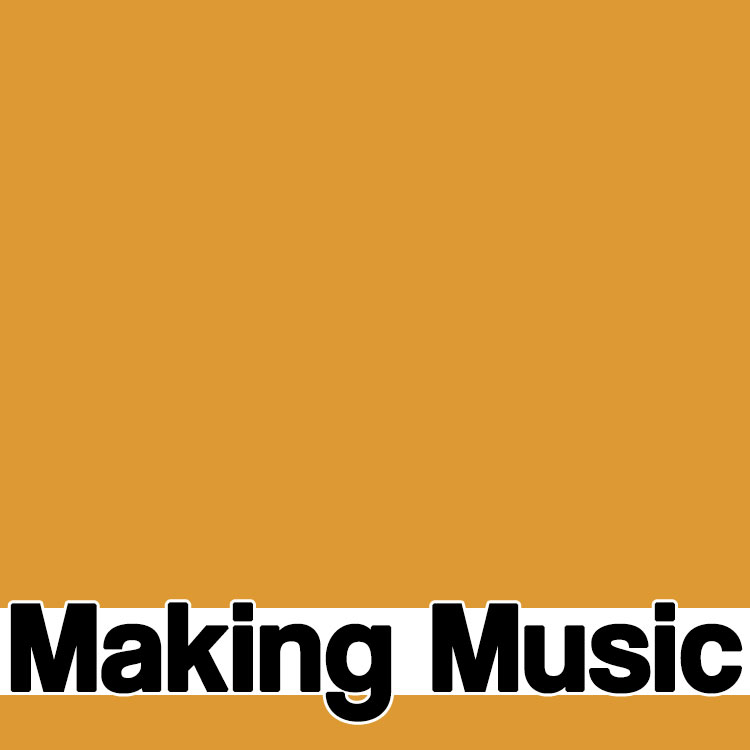Last Updated on September 10, 2017 by Andrew Culture
Since I was a 13 year old kid, I wanted to write and record my own music. Seems a simple enough idea, eh? In the 80s I was restricted to recording with a crappy mic to tape after hours of rehearsal and practice with my younger brother and sister. Sadly, or thankfully, our post rock anthem Crazy Numbers has been lost. And by some tragic trick of the gods of recording, my mate Ed and mine’s Zenator’s epic 13 minutes of guitar and drum mayhem Axe Attack has disappeared.
By the end of the 80s I’d progressed, with friends, to the holy grail of Fostex Portastudio 4 track tape recording. The opportunities of ‘punching in and out’, of overdubbing and of recording 4 sources simultaneously was staggering. This truly was groundbreaking stuff!

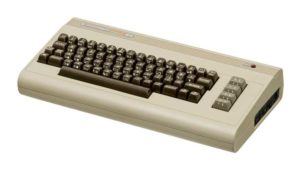
Atari and Commodore
Then, the game changed. This was a golden time of home grown bedroom production. Our games machines of Ataris and Commodore 64s were recommissioned by Steinberg’s Cubase and Emagic’s Logic software to be midi controllers for music sequencing. The Atari ST2460 became the de facto go to machine of choice, blessed with its integrated midi in and out ports. For almost a decade, this bedroom computer ruled the roost for electronic music production, and Cubase was the software sequencer that everyone aspired to use.
Remember this?
Proper, mainstream music at this time was ignoring the revolution that had started, the democratising of music. It was a side show, an irrelevance, not real, not music, not commercial. This was a time of big record labels, of MTV, of accountants running the show, of Dire Straits and ZZ Top. 15 years earlier, punk had defied the music industry and the same DIY ethos was about to do the same in the 90s. No one saw it coming.
While Seattle and Britpop changed the charts, bedroom computers, acid house music and the underground rave scene changed a generation, and contemporary music forever. The time was right for A Guy Called Gerald, for 808 State, for Guru Josh. Then The Prodigy exploded into the mainstream public consciousness. It was raw, explosive and dangerous. And the track that broke through was Charlie. Sampling old 1970s public information films, Charlie went on to become the defining track of this new genre.
House music fractured into a miriad of different genres, encompassing house, rave, acid house, trance, progressive house, deep house, jungle, techno and ambient house. Some of the albums from this era still hold up as some of the greatest recordings of all time…. Leftfield’s Leftism, The Orb’s Adventures Beyond The Ultraworld, Orbital’s Green Album, Roni Size & Reprazent’s New Forms and Primal Scream’s Screamadelica are stuff of legends. All produced with bedroom computers, Akai samplers and DAT recorders. And some pretty amazing, yet cheap as chips, old school synths.

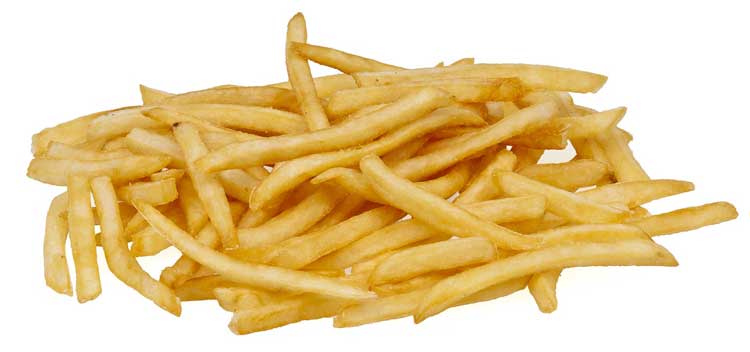
Nobody in their right mind wanted old Roland TR808 or TR909 drum machines, Junos, SH101s bass machines. They were analogue, unreliable, old, and went out of tune if you so much as looked at them. No, the shiny new FM DX7 synths from Yamaha, Roland’s LA synthesis engine in the D50 and Korg’s M1 workstations were in vogue and desirable. The acid generation took full advantage and snapped up the unloved, unwanted analogue machines and made them theirs.
There are a few machines that defined this era, the Akai S3000 sampler, the Roland TB303, and the Atari ST2460. The holy trinity of House Music. But it’s the lush, analog sounds and hands on “tweakability” of these machines that lent themselves so easily to the new sounds of acid house.
Here we are now
Fast forward twenty five years and we, as enthusiastic but ultimately amateur music producers, are incredibly blessed with the choices and ease of music production available to us today. For limited outlay, and a weekend’s worth of learning, we have at our fingertips the most powerful, easy to use, accurate and detailed renditions of fabled instruments, studios and effects the world has ever known. Your imagination and creativity are your only limits. Truly, if Led Zeppelin or The Beatles had the resources available to us today, the mind boggles as to what they could have created.

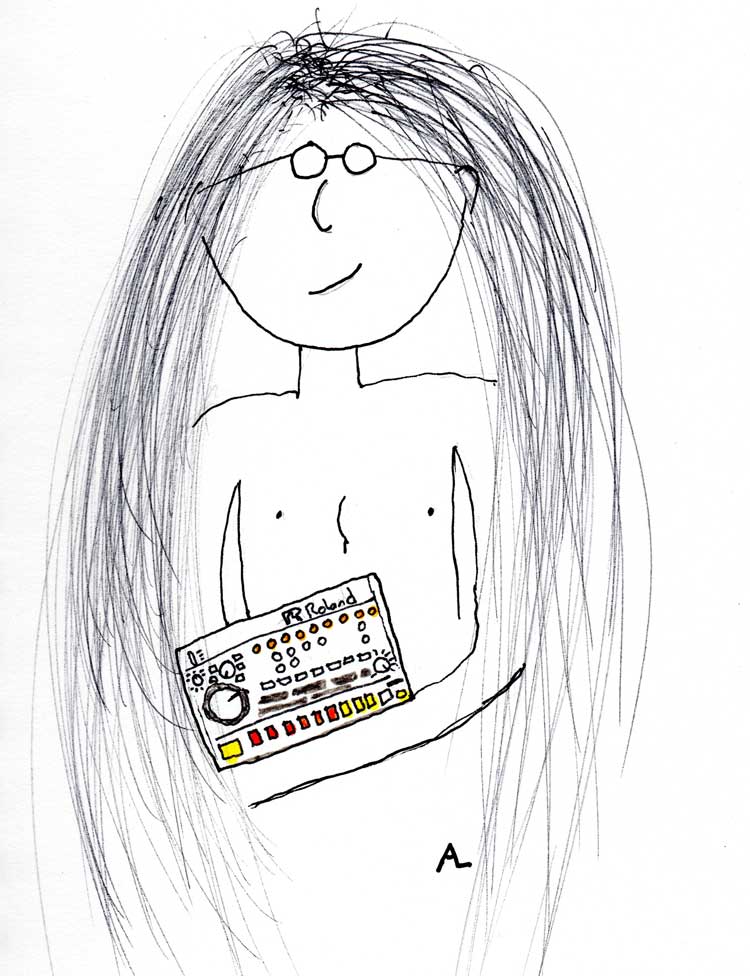
But you know what? Sometimes less is more. With an unlimited choice of sounds, effects and recording takes, the original kernel of an idea can become lost in the “noise” of trying to achieve the perfect mix. Back at the dawn of electronic house music, the limited memory and resource available to producers dictated what was possible.
Voodoo Ray was an accident as A Guy Called Gerald was sampling Peter Cook saying “voodoo rage” but the memory ran out. We need to strip back the layers of plug ins, effects and instruments and concentrate on writing a good song. As a rule of thumb, if it sounds good on acoustic guitar or piano, it’ll sound good as a full production.
Controversially, the democratising of music production might have taken the talent out of song writing, and the stringing together in Garage Band of a hard drive full of Apple Loops is akin to painting by numbers. It’s blooming brilliant that we have synced and perfectly timed drum loops and melodies to play with, but never forget that a track needs to have “you” in it, your emotion, your idea, your spirit. Just because it’s there, don’t be lazy and rely upon a session musician’s recording in New York as a loop to be the fundamental basis for your track. It won’t work and listeners won’t believe in you. Nothing in life is easy, and creating music is no different. Take the time to learn your instrument and craft. The rest will follow.



